 W
WThe Bichvinta Four Gospels is a 12th-century illuminated manuscript of the Four Gospels in Georgian, copied in the nuskhuri script. It is named after the cathedral church in Abkhazia, where the book was discovered in 1830. The manuscript is now at the Georgian National Center of Manuscripts, Tbilisi, as H-2120.
 W
WThe Book of Deer is a 10th-century Latin Gospel Book with early 12th-century additions in Latin, Old Irish and Scottish Gaelic. It is noted for containing the earliest surviving Gaelic writing from Scotland.
 W
WIt is an important example of Romanesque illumination from Norman England, and bears comparison with the Lambeth Bible and the Winchester Bible.
 W
WThe Lambeth Bible is a 12th-century illuminated manuscript, among the finest surviving giant Bibles from Romanesque England. It exists in two volumes; the first is in Lambeth Palace Library and covers Genesis to Job on 328 leaves of vellum measuring circa 520 x 355 mm; the second incomplete volume is in the Maidstone Museum & Art Gallery.
 W
WLectionary 240, designated by siglum ℓ 240 is a Greek manuscript of the New Testament, on parchment. Palaeographically it has been assigned to the 12th century. Scrivener labelled it by 231evl. The manuscript has complex contents.
 W
WLectionary 241, designated by siglum ℓ 241 is a Greek manuscript of the New Testament, on parchment. It is dated by a Colophon to the year 1199. Scrivener labelled it as 232evl. The manuscript is lacunose.
 W
WLectionary 2137, designated by ℓ 2137 in the Gregory-Aland numbering. It is a Greek manuscript of the New Testament, on parchment leaves, dated paleographically to the 12th century.
 W
WCodex Basilensis A. N. IV. 2, Minuscule 1, δ 254 and formerly designated by 1eap to distinguish it from minuscule 1rK is a Greek minuscule manuscript of the New Testament, usually dated palaeographically to the 12th century AD. It is written on 297 parchment leaves and contains the entire New Testament except the Book of Revelation.
 W
WCodex Basiliensis A. N. IV. 1, known as Minuscule 2, ε 1214, is a Greek minuscule manuscript of the New Testament, dated palaeographically to the 11th or 12th century. It was used by Erasmus in his edition of Greek text of the New Testament and became the basis for the Textus Receptus in the Gospels. The manuscript has complex contents.
 W
WMinuscule 57, δ 255, is a Greek minuscule manuscript of the New Testament, on parchment leaves. Palaeographically it has been assigned to the 12th century. The manuscript is lacunose. It has marginalia.
 W
WMinuscule 104, α 103 (Soden), is a Greek minuscule manuscript of the New Testament, on parchment leaves. Palaeographically it has been assigned to the 11th century.
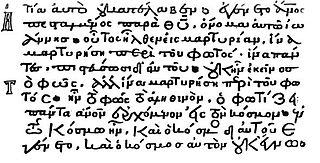 W
WCodex Ebnerianus, Minuscule 105, δ 257 (Soden), is a Greek language illuminated manuscript of the New Testament, though missing the Book of Revelation.
 W
WMinuscule 116, ε 249 (Soden), is a Greek minuscule manuscript of the New Testament, on parchment leaves. Palaeographically it has been assigned to the 12th century. It has complex contents with some marginalia.
 W
WMinuscule 157, ε 207 (Soden), is a Greek minuscule manuscript of the New Testament Gospels, on vellum. According to the colophon it is dated to the year 1122. Formerly date was wrongly deciphered as 1128?. It has complex contents and full marginalia.
 W
WMinuscule 319, α 256 (Soden), is a Greek minuscule manuscript of the New Testament, on parchment. Palaeographically it has been assigned to the 12th century. Formerly it was labelled by 24a and 29p.
 W
WMinuscule 321, α 254 (Soden), is a Greek minuscule manuscript of the New Testament, on parchment. Palaeographically it has been assigned to the 12th century. Formerly it was designated by 26a and 32p. It has marginalia.
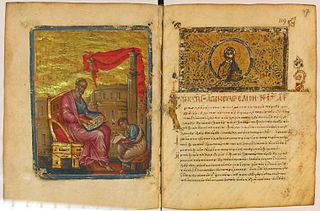 W
WMinuscule 330, δ 259 (Soden), is a Greek minuscule manuscript of the New Testament, on parchment. Palaeographically it has been assigned to the 12th century. It has marginalia. The Greek text of the codex is a representative of the Byzantine text-type.
 W
WMinuscule 485, ε 247, is a Greek minuscule manuscript of the New Testament, on parchment. Palaeographically it has been assigned to the 12th-century. Scrivener labeled it by number 572. The manuscript is lacunose. It contains liturgical books: Synaxarion and Menologion.
 W
WMinuscule 505, ε 248, is a Greek minuscule manuscript of the New Testament, on parchment. Palaeographically it has been assigned to the 12th-century. Scrivener labelled it by number 567. The manuscript has complex contents. It was adapted for liturgical use.
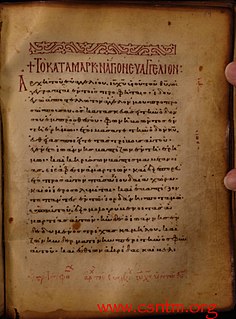 W
WMinuscule 532, ε 255, is a Greek minuscule manuscript of the New Testament, on parchment. Palaeographically it has been assigned to the 12th century. Scrivener labeled it number 545. The manuscript was adapted for liturgical use. It is very incomplete, with many omissions and faded text along with much of it being missing because a missing manuscript contains some of the text.
 W
WMinuscule 535, 548 (Scrivener), ε 140, is a Greek minuscule manuscript of the New Testament, on a parchment, dated to the 12th century. It was adapted for liturgical use, with full marginalia.
 W
WMinuscule 537, ε 334, is a Greek minuscule manuscript of the New Testament, on a parchment. Palaeographically it has been assigned to the 12th century. Scrivener labelled it by number 550. The manuscript was prepared for liturgical use, its marginalia are not complete. It has survived until the present day in complete condition.
 W
WMinuscule 543 in the Gregory-Aland numbering is a Greek minuscule manuscript of the New Testament, on parchment. Palaeographically it has been assigned to the 12th century.
 W
WMinuscule 556, A 213, is a Greek minuscule manuscript of the New Testament, on a parchment. Palaeographically it has been assigned to the 12th century. Scrivener labelled it by number 526.
 W
WMinuscule 828, ε219, is a 12th-century Greek minuscule manuscript of the New Testament on parchment. The manuscript has survived in complete condition. It contains marginalia.
 W
WMinuscule 863, Θε301, is a 12th-century Greek minuscule manuscript of the New Testament on parchment. The manuscript has no complex context.
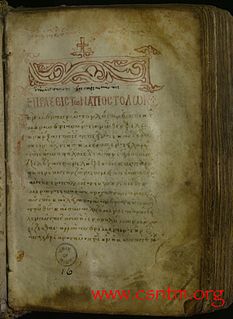 W
WMinuscule 876 α 356 (Soden). It is a Greek minuscule manuscript of the New Testament, on 282 parchment leaves. It is dated paleographically to the 12th century. Formerly it was labelled by 224a and 279p. Scrivener labelled it by 221a.
 W
WMinuscule 905, ε1130, is a 12th or 13th-century Greek minuscule manuscript of the New Testament on parchment. The manuscript has survived in complete condition. It has liturgical books and marginalia.
 W
WMinuscule 909, α263, is a 12th-century Greek minuscule manuscript of the New Testament on parchment. The manuscript has survived in complete condition. It has marginalia.
 W
WMinuscule 922, δ 200, is a 12th-century Greek minuscule manuscript of the New Testament on parchment. It has marginalia. The manuscript has survived in complete condition.
 W
WMinuscule 2445. It is a Greek minuscule manuscript of the New Testament, on 116 parchment leaves. It is dated paleographically to the 12th century. A large part of the codex lost.
 W
WMinuscule 2814, Aν20, formerly labelled as 1rK in all catalogues, but subsequently renumbered as a 2814 by Aland, is a Greek minuscule manuscript of the New Testament, dated palaeographically to the 12th century.
 W
WMinuscule 2818, Aπρ20. Formerly it was labelled as 36aK in all catalogues, but it was renumbered by Aland, because two manuscripts had number 36. It is a Greek minuscule manuscript of the New Testament, dated palaeographically to the 12th-century.
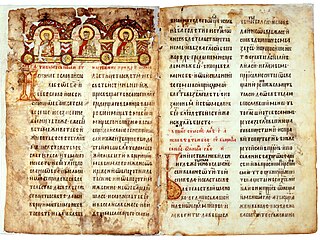 W
WMiroslav's Gospel is a 362-page illuminated manuscript Gospel Book on parchment with very rich decorations. It is one of the oldest surviving documents written in the Serbian recension of Church Slavonic. The gospel is considered a masterpiece of illustration and calligraphy.
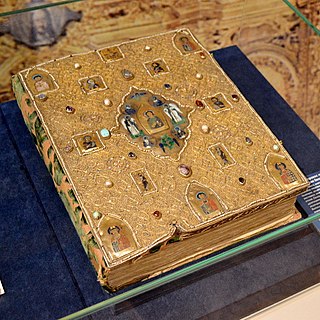 W
WMstislav Gospel is a 12th-century manuscript of the four Gospels on parchment in Old Church Slavonic. It is kept in the State Historical Museum in Moscow. The manuscript contains the text of the four Gospels on 213 parchment leaves.